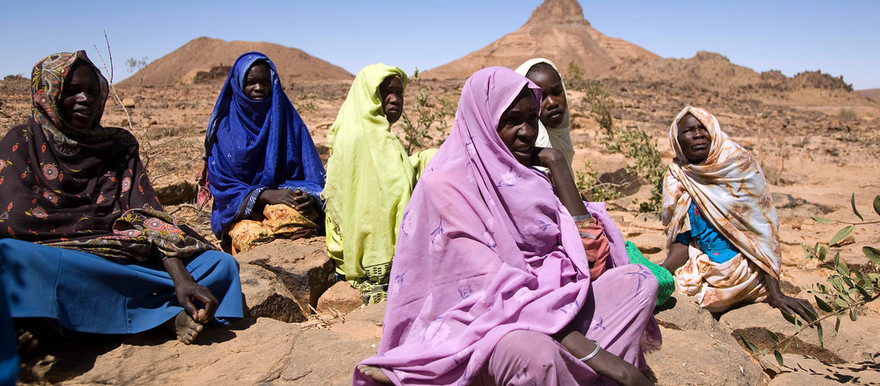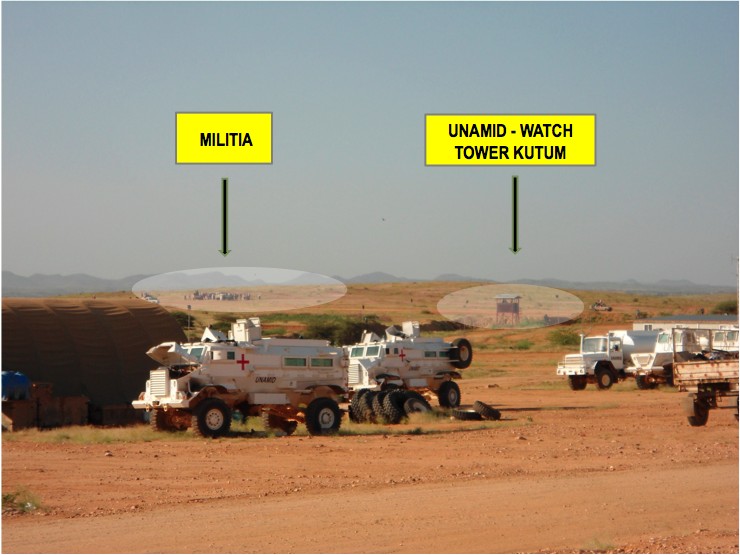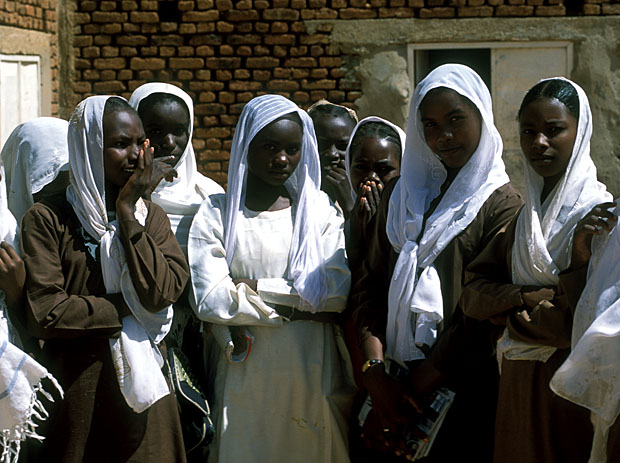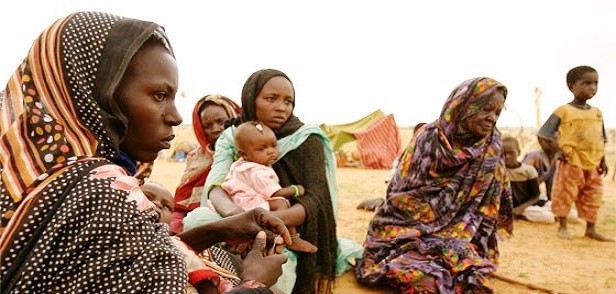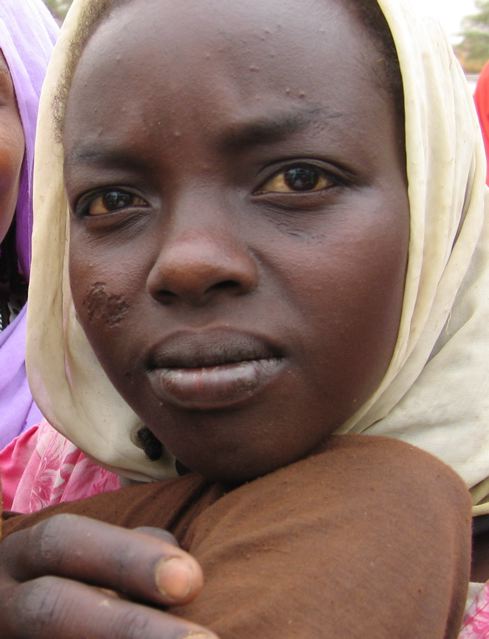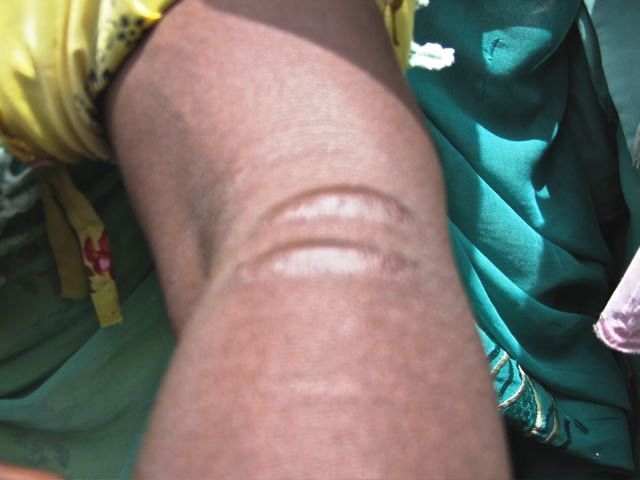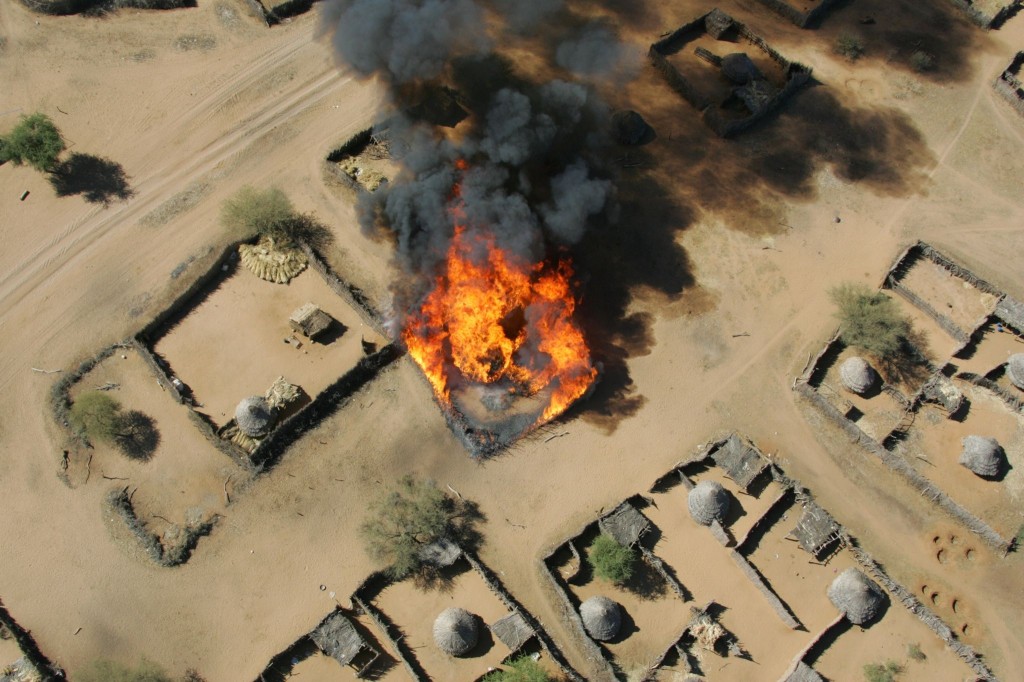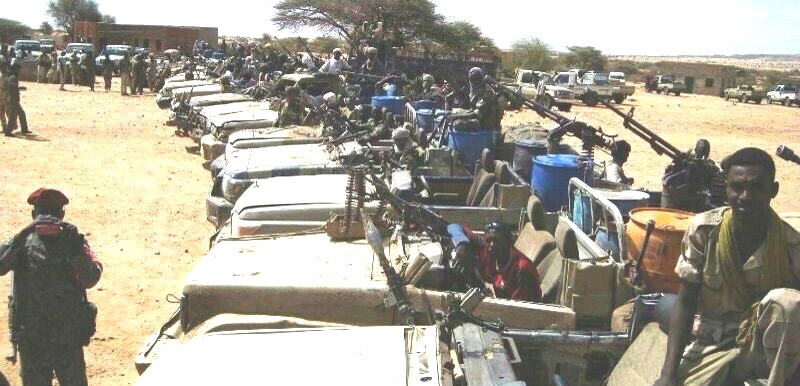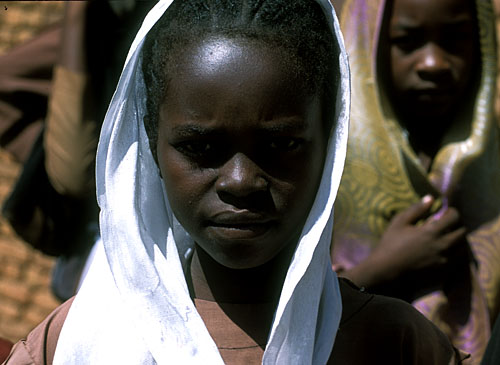Continuing Mass Rape of Girls in Darfur: The most heinous crime generates no international outrage | January 2016
Eric Reeves, author | Maya Baca, research and editing | http://wp.me/p45rOG-1QG
[Arabic translation of this report | http://wp.me/p45rOG-1Rr ]
[Arabic names for key locations on maps | http://wp.me/p45rOG-1Si ]
[See also “Rape in Darfur: A History of Predation,” November 2015 | Waging Peace | http://sudanhr.org/blog/2015/11/19/rape-in-darfur-a-history-of-predation-by-wagingpeace-2/ ]
Amidst the ongoing genocidal destruction of Darfur, atrocity crimes of all sorts continue to be committed by the regular forces of the Khartoum regime (the Sudan Armed Forces) as well as its militia allies (now primarily the Rapid Support Forces). These crimes are committed with complete impunity. The genocidal character of violence in recent years is beyond reasonable dispute (see “Changing the Demography”: Violent Expropriation and Destruction of Farmlands in Darfur, November 2014 – November 2015” | http://wp.me/p45rOG-1P4). The non-Arab or African tribal populations of Darfur—the majority of people in the region—continue to be the intentional targets of army and militia killings, village destruction, land expropriation, and violent displacement.
They are also the targets of a campaign of rape that has marked the genocide since the beginning of conflict in 2003. This report provides a statistical and analytic overview of the years 2014 and 2015.
• All data is recorded in a spreadsheet
• A mapping of all data for this period appears at | http://wp.me/p45rOG-1Qy
• The campaign of rape has previously been all too well documented: see Appendix B for a bibliography of reporting going back more than a decade | http://sudanreeves.org/2016/01/14/7098/
Racial epithets hurled at victims by their Arab attackers have been remarked in all of these reports, and continue to be documented by Radio Dabanga, along with 2015 reports from Sudan Development Organization (UK), our only meaningful sources for information about the continuing use of rape as a weapon of war.
In contrast, the UN has repeatedly demonstrated a despicable acquiescence in reporting on a subject that Khartoum regards with particular concern, given the opprobrium that attaches to rape as a crime in the Arab Muslim world. Both dysfunctional UNAMID reporting from the ground and reporting by the UN Secretariat in New York suggest how great this acquiescence is. For example, in the first two quarterly reports by Secretary-General Ban Ki-moon in 2012, on Darfur and UNAMID, not a single incident of rape or sexual violence is noted, even as rapes continued on a scale that dwarfs all but one or two conflicts in the world today.
Women who are targets of rape in a violent and deeply insecure Darfur
Many tens of thousands of girls and women have been raped or sexually assaulted since early 2003, although we of course have nothing approaching a precise census (as is true for mortality related directly or indirectly to violence). For the UN Secretary-General to omit mention of even one example in reports that represented six months of 2012—the year in which current violence began to accelerate and plans for the Rapid Support Forces (RSF) rapidly advanced—is reprehensible. Certainly we know from many scores of reports from Radio Dabanga that UNAMID typically fails to report rapes brought to their attention, and certainly does no significant investigative work and offers pitifully little protection.
A sense of the scale of the sexual violence in Darfur is most readily apparent in an April 2012 study released in PLoS Medicine and based on the work of a number of authors, most prominently Dr. Mohamed Ahmed Eisa, whose archives from the Nyala-based Amel Center for Treatment & Rehabilitation for Torture Victims were essential in generating that data the permitted publication in this peer-reviewed medical journal:
Approximately one-half (49%) of all women disclosed that they had been sexually assaulted, and one-half of sexual assaults were described as having occurred in close proximity to a camp for internally displaced persons (“Medical Evidence of Human Rights Violations against Non-Arabic-Speaking Civilians in Darfur: A Cross-Sectional Study,” PLOS Medicine, April 3, 2012 | DOI:10.1371/journal.pmed.1001198)
Any extrapolation, of even the most conservative nature, yields figures of many tens of thousands of women raped in Darfur, perhaps reaching to the hundreds of thousands.
This pervasive climate of impunity culminated in the mass rape of girls and women in Tabit, North Darfur (October 30, 2014 – November 1, 2014). Some 220 girls and women were raped over the course of 36 hours by regular Sudan Armed Forces (SAF) soldiers, on orders from the commander of the SAF garrison near Tabit. Nine days later (November 10, 2014), UNAMID was finally allowed to “investigate,” but found a village terrified by the massive security presence as UNAMID investigators arrived. The whole scene was filmed by security officials, and two Military Intelligence officers escorted every investigator. There was no opportunity for any individual to speak openly, something readily apparent to the investigators. Nonetheless, UNAMID headquarters immediately released a statement declaring:
None of those interviewed confirmed [in Tabit] that any incident of rape took place in Tabit on the day of that media report. The team neither found any evidence nor received any information regarding the media allegations during the period in question.
An internal UNAMID document, however, leaked to me from within UNAMID on November 20, 2014, made clear how fully aware the investigators were of the impossible circumstances in which they had conducted their “interviews.” In February 2015 Human Rights Watch released a definitive report on the Tabit rapes: “Mass Rape in North Darfur: Sudanese Army Attacks against Civilians in Tabit.” Lead author Jonathan Loeb interviewed 130 people, including more than 50 current or previous residents of Tabit, victims as well as eyewitnesses.
UNAMID inaction in the presence of an assault on civilians—a commonplace
Rather than accept the Human Rights Watch report as authoritative, the UN and the international community continue to make self-serving demands for what they know to be an impossible “independent investigation,” now well over a year after events. Khartoum has made emphatically clear that it will permit no such investigation, making international demands for access pointedly irrelevant, if politically obligatory. Instead of responding to realities as reported by those on the ground, the world continues to dither, with no talk of consequences for massive atrocity crimes, established as fact beyond all reasonable doubt.
The Rape of Girls in Darfur
We should not be surprised that given this international acquiescence, rape continues unabated, even in the Tabit area. Radio Dabanga reported on October 31, 2014 that 49 rapes had occurred in and around Tabit since the events of October 31 – November 1, 2014. What has not received sufficiently specific attention is the frequency with which the victims of rape are girls, female civilians under the age of eighteen. And yet this is a huge population: a shocking 2005 UNICEF “Child Alert” for Darfur reported that one of every three rape victims was a girl:
A recent report from the UN High Commissioner for Human Rights said that in almost one in three reported rapes, the victims were children, and a recent UNICEF/UN Population Fund study suggests that the number might be even higher. The immediate impact of these rapes is life-threatening and horrific for the victims. They are also attacks on the very fabric of families and communities, extremely painful events that add to the endemic feelings of humiliation and powerlessness.
If these rates do in fact define the use of rape as a weapon of war in Darfur, and given the findings of the PLOS Medicine study (see above) then we must speak of tens of thousands of girls having been raped during the conflict.
The immediate occasion for this survey of rapes targeting girls, however, was a single incident reported by Radio Dabanga (December 10, 2015) in the following terms:
Girl raped by four near Tabit, North Darfur | December 10, 2015, Tabit, North Darfur
A 14-year-old girl was gang-raped in Tawila locality, North Darfur, today. Speaking to Radio Dabanga, a relative of the victim reported that four militiamen riding camels ambushed the girl as she collected straw in the area of Kedareik, five kilometres east of Tabit. “They raped her alternately for three hours, from 10 am until 1 pm,” she said. The victim was taken to a clinic in the Zamzam camp for the displaced near El Fasher, capital of North Darfur. “She is still bleeding. As a result of the shock he is not able to eat nor talk,” the relative added.
Tens of thousands of such girls have been raped; they are a prime target of Arab militias
Women with good reason to be fearful
It is an open question as to whether the girl will survive. Radio Dabanga almost never follows up in cases such as this with reporting on the medical outcomes of treatment. This is a function of the difficulty of securing information from within hospitals, and the fact that other events continue to demand intensive reporting resources. Radio Dabanga did offer the world the first, and remarkably accurate, account of the rapes at Tabit only one day after these terrible events.
Notably, however, reporting by Sudan Development Organization/UK (SUDO/UK) has this year become much stronger with its own very large contingent of Darfuri monitors on the ground and reporting to London (SUDO was one of three Sudanese national humanitarian organizations shut down by Khartoum at the same time (March 5, 2009) the regime was expelling thirteen major international humanitarian organizations). Beginning with the monthly surveys of Human Rights Abuses in Sudan in June of this year, previously scattered and somewhat irregular reports were consolidated and provide clear overviews, month by grim month. All data from these monthly reports, as well as the less organized previous reports of 2015, are reflected on the data spreadsheet.
But the rape of girls has long seemed to me to demand particular attention, and requires an especially harsh judgment, given its cruelty, its destructiveness, and the unfathomable agony that typically extends to the victim’s family and village (or displaced persons camp). Often girls have only recently experienced genital circumcision, and are as a consequence much more vulnerable to medical complications following gang-rape. The fact of gang-rape in itself greatly increases the medical risks, and many girls have clearly succumbed to injury and trauma. (See various relevant entries in the Bibliography | Appendix B.)
A girl deliberately scarred so as to make the fact of her rape permanently visible (photograph by Mia Farrow)
This brutally heinous crime has been reported authoritatively for more than a decade:
A recent United Nations investigation into war crimes in Darfur laid out, in page after graphic page, evidence of widespread and systematic rape in the two-year conflict. In one incident, a woman in Wadi Tina was raped 14 times by different men in January 2003. In March 2004, 150 soldiers and janjaweed abducted and raped 16 girls in Kutum, the report said. In Kailek, it said girls as young as 10 were raped by militants. (New York Times [el-Geneina, West Darfur], February 11, 2005)
Doctors Without Borders/Médecins Sans Frontières (MSF)/Holland reported in March 2005:
“One of the three men [Janjaweed] took me away from the other women. He threatened me with his knife by pinching my chest with it. He pushed me on the ground and took off my underwear. He raped me and was repeating, ‘I will kill you’ all the times to intimidate me.” (From a young girl, 14, February 2005, South Darfur) (“The Crushing Burden of Rape: Sexual Violence in Darfur,” March 2005)
And yet nothing meaningful has been done to halt this terrible crime; indeed, Khartoum promptly arrested two of the most senior MSF officials in Sudan following publication of “The Crushing Burden of Rape: Sexual Violence in Darfur,” a signal that was lost on no organization working in Darfur. More has been published, including a crucial report by Physicians for Human Rights (again, see Appendix B for a bibliography of studies that have attempted to address the subject of rape in Darfur), but the reality of girls as young as five and six being raped has not prompted particular outrage.
Moreover, it is not simply paramilitary or militia forces that are responsible for the rapes of girls and women: regular soldiers continue to participate in the orgy of sexual violence, as demonstrated by the mass rapes at Tabit, committed by SAF troops on orders from their garrison commander.
The utterly despicable crime of raping girls has to date occasioned no specific analysis—no aggregation of data or reports, no assessment of implications for the longer term welfare of these girls in Darfuri society. Such analysis will be limited in completeness and usefulness so long as Khartoum denies human rights reporters all meaningful access to Darfur, and allows no independent international news coverage or interview opportunities. The scale of rape, and specifically the rape of girls, remains with too many other horrors contained within the “black box” that the regime has succeeded in making of Darfur.
A girl branded to mark the fact of her rape (photograph by Mia Farrow)
But we cannot watch in silence as massive evidence continues to accumulate that many tens of thousands of girls have been raped or sexually assaulted over the past twelve years. We may at least survey what data are available and draw whatever conclusions these data permit. And certainly we should be fully aware of how international law bears on what is represented by the massive, ongoing campaign in which rape is deliberately used as a weapon of war in Khartoum’s genocidal counter-insurgency.
[It must be said that the particular plight of children, not just those sexually assaulted, has received much too little attention over the years; Appendix A offers a lengthy general assessment I published in the Sudan Tribune in December 2005—ten years ago almost to the day. Far too little research has come in its wake—certainly nothing that obliges a qualification of the broader conclusions. Among the few subsequent studies, excerpted for this Appendix, there is clear evidence of terrifying psychosocial profiles for children in camps for the displaced, characterized by extremely high rates of clinical depression and Post-Traumatic Stress Disorder (PTSD). In August 2011 the distinguished British medical journal The Lancet published findings of a shocking magnitude:
…forcibly displaced children in low-income and middle-income settings have high rates of psychiatric disorders. Thus 75% of 331 displaced children in camps for internally displaced people in southern Darfur met diagnostic criteria for post-traumatic stress disorder, and 38% had depression.]
These figures are much likely worse four years later as Khartoum has dramatically accelerated attacks not only on villages but on camps for the displaced as well.]
Continuing Genocide in Darfur
The genocidal nature of the present, extremely intense counter-insurgency campaign—now in its third year and focusing ferociously on Eastern Jebel Marra and the Jebel Marra massif more generally—remains conspicuous if we look at those attacked and their attackers. In the Jebel Marra region broadly, the predominant African tribal group is the Fur, the largest ethnic group in Darfur. The farms violently expropriated—destroyed by military bombings and by the loosing of livestock onto lands rich in crops, and which in turn have been claimed by various Arab militia groups—are African farmlands. (Again, see “‘Changing the Demography’: Violent Expropriation and Destruction of Farmlands in Darfur, November 2014 – November 2015” | http://wp.me/p45rOG-1P4/; in this connection see “clause c” from the 1948 UN Genocide convention, discussed immediately below).
African villages are again being attacked on a wide-scale, with clearly ethnic targeting (photograph by Brian Steidle, 2005)
So, too, the victims of rape in Darfur are overwhelmingly African—with Arab militiamen, regular SAF troops, or opportunistic bands of thugs almost always the perpetrators. And at least one clause from the 1948 UN Convention on the Prevention and Punishment of the Crime of Genocide has clear relevance for an understanding of the systematic rape of African girls and women in Darfur. Article 2 of the Convention reads in its entirety as follows:
In the present Convention, genocide means any of the following acts committed with intent to destroy, in whole or in part, a national, ethnical, racial or religious group, as such:
(a) Killing members of the group;
(b) Causing serious bodily or mental harm to members of the group;
(c) Deliberately inflicting on the group conditions of life calculated to bring about its physical destruction in whole or in part;
(d) Imposing measures intended to prevent births within the group;
(e) Forcibly transferring children of the group to another group.
There can be little doubt that clause (b) bears directly on our understanding of the systematic, ethnically-targeted rape of girls and women as a weapon of war (a war with consequences that fall within the ambit of clause (d)). Indeed, it is difficult to determine in the case of girls which is likely to be more consequential: “bodily” or “mental” harm. Both are so extreme as to make comparison invidious. The seriousness of the “bodily” harm is captured all too well in the recent example above from the Tabit area. We will never know how many girls suffered fatal bodily trauma during gang-rapes; we will never know how many cases of fistula were caused by rapes, or other physical injuries that would compromise physical life or preclude conceiving or giving birth to a child. There is significant medical literature addressing the issues here, including one using data from Darfur; they are included in the bibliography (Appendix B).
But we also know that suicide is the despairing response to rape in too many cases, both among girls and women. Physicians for Human Rights, in an unprecedented study (“Nowhere to Turn: Failure to Protect, Support and Assure Justice for Darfuri Women,” May 2009 (http://physiciansforhumanrights.org/library/reports/nowhere-to-turn.html), found that Darfuri women living as refugees in eastern Chad had extremely poor mental health indicators, and these were much worse among women who had been raped:
Women who experienced rape (confirmed or highly probable) were three times more likely to report suicidal thoughts than were women who did not report sexual violence.
And we know from many reports just how deeply stigmatizing rape is—the primary reason Arab rapists often burn or scar their victims, thereby ensuring that the fact of rape can never be fully hidden (see photographs above). For girls and women of marriageable age, the consequences of this stigmatizing can be immensely destructive. Opportunities for marriage often disappear entirely; some men divorce their wives after they have been raped, a sign of how deeply consequential the fact of rape is in the conservative Muslim ethos of Darfur.
Families are often traumatized by the rapes of girls, which they are often forced to witness. In late February 2004, at the height of genocidal destruction, notorious Janjaweed leader Musa Hilal was reported by several witnesses to have been in command during an episode of almost unfathomable destruction:
In an attack on 27 February [2004] in the Tawilah [more commonly Tawila—ER] area of northern Darfur, 30 villages were burned to the ground, over 200 people killed and over 200 girls and women raped—some by up to 14 assailants and in front of their fathers who were later killed. A further 150 women and 200 children were abducted. (UN Integrated Regional Information Networks, March 22, 2004)
Musa Hilal, the most notorious of the Janjaweed leaders, was present and directing the attack reported immediately above
The Janjweed have been replaced by the much more heavily armed and directly supported (from Khartoum) Rapid Support Forces (RSF); they are engaged in the same kind of genocidal destruction. Addressing the RSF in December 2014, the Second Vice President of the Khartoum regime likened the African peoples of East Jebel Marra in North Darfur to “insects”…echoes of Rwanda
The rape of girls and women is very frequently accompanied by the use of racial epithets, confirming the ethnic targeting of the victims as defined in the genocide convention. Notably, in the Akayesu judgment, a Trial Chamber of the Rwanda Tribunal explained that, “rape and sexual violence may constitute genocide on both a physical and mental level” (William Schabas, Genocide in International Law, 183). In Darfur, reports of rape clearly document the physical level (actus reus) of the crime while the frequently accompanied use of racial epithets confirm both the ethnic-targeting of victims and mental intent (mens rea) of the perpetrators.
Racist animus in sexual assaults
It is imperative to bear in mind that rape and sexual violence have a strong racial/ethnic animus in Darfur. Virtually all the reported attacks are of Arab men upon non-Arab or African girls and women (in its 2004 study, Amnesty International found only one instance in which rebel forces from the Fur, Massalit, Berti, Tunjur, or Zaghawa non-Arab or African ethnic groups were responsible for rape). Here the reports from SUDO/UK are of particular value, since they frequently identify in particular incidents the ethnicity of those killed or raped or maimed.
This must not be lost sight of, as some have already done (see Dissent Magazine, January 26, 2012). The examples here from Amnesty International (“Sudan, Darfur: Rape as a Weapon of War,” July 19, 2004) could be replicated from countless other reports and news accounts:
[1] “Omar al Bashir told us that we should kill all the Nubas. There is no place here for the Negroes any more.” (Words of a Janjawid fighter, according to a refugee from Kenyu, interviewed by Amnesty International in Chad, May 2004)
[2] “The Tama, a small ethnic group mainly composed of farmers, have been both victims of attacks and accused several times of siding with the Janjawid in the 2003-2004 conflict: ‘Slaves! Nubas! Do you have a god? You, ugly black pretend… We are your god! Your god is Omer al-Bashir.’”
[3] “M., a 50-year-old woman from Fur Baranga reported: ‘The village was attacked during the night in October 2003, when the Arabs came by cars and on horses. They said’ “every black woman must be killed, even the children.”’”
[4] “Sudanese refugees interviewed by Amnesty International in Chad, who alleged that Salamat nomads from Chad and fighters from Mauritania were recruited to fight in Darfur:
‘What we heard from the Janjawid is that Omer al-Bashir tells the foreigners that they are Arabs and that they should come and live in a country that is ruled by Arabs. That they should not stay where they are ruled by Africans. They say that ‘Sudan is a country for Arabs.‘” (M., Sudanese refugee in Chad, interviewed by Amnesty International in May 2004)
[5] “‘The government gave the Arabs confidence, arms, cars and horses. We cannot go back; there will be no security for African people in Darfur.’” (Sudanese woman interviewed by Amnesty International in Mile refugee camp, Chad, May 2004)
[6] “M., a Masalit chief of the village of Disa, reported that during attacks in June 2003 by the Janjawid and in July and August by the military, 63 persons were killed, including his daughter. In June the Janjawid reportedly accused the villagers of being ‘traitors to Omer Hassan Al-Bashir.’ [ ] In July the military arrested several persons including Brahim Siddiq, a seven-year-old boy. In June the Janjawid said during the attack: ‘You are complicit with the opponents, you are Blacks, no Black can stay here, and no Black can stay in Sudan.’ Arab women were accompanying the attackers singing songs in praise of the government and encouraging the attackers. The women said:
‘The blood of the Blacks runs like water, we take their goods and we chase them from our area and our cattle will be in their land. The power of al-Bashir belongs to the Arabs and we will kill you until the end, you Blacks, we have killed your God.’ They also insulted the women from the village saying ‘You are gorillas, you are Black, and you are badly dressed.’”
The MSF report from 2005 (“The Crushing Burden of Rape: Sexual Violence in Darfur” | Amsterdam, March 8, 2005) provides other terrible examples, including:
“We saw five Arab men who came to us and asked where our husbands were. Then they told us that we should have sex with them. We said no. So they beat and raped us. After they abused us, they told us that now we would have Arab babies; and if they would find any Fur [one of the non-Arab or African tribal groups of Darfur], they would rape them again to change the colour of their children.’ (Three women, 25, 30 and 40, October 2004, West Darfur)” (page 1)
Sexual assaults against boys, including rapes, have been reported during the long course of Darfur’s genocide. But the most common form of violence is for boys of any age simply to be murdered, and not only by means of indiscriminate firing by militia forces or bombing by SAF aircraft. This determination to kill boys was captured graphically in a report by Julie Flint in February 2005:
Maryam Ahmad had travelled with her 21-day-old son, Ahmad, on another road controlled by Janjawid, between Tawila and Kabkabiya. The Janjawid had stopped her, taken Ahmad from her and cut off his penis. He died in her arms. “It’s what they do to boys,” said Afaf, two months pregnant and preparing to return to al-Fasher to deliver. (Middle East International [Darfur], February 17, 2005)
And rape is “what they do” to girls. The world well knows this, and yet refuses to respond to this terrible reality in any meaningful way.
Impunity
The response of authorities in Darfur has been consistently unhelpful in halting the epidemic of sexual violence, clearly following guidelines that have their ultimate origins in Khartoum. However these may be interpreted locally, the effect is to maintain the present climate of complete impunity in the rapes of girls and women. Two reports from SUDO/UK are all too characteristic.
On November 26, 2015 SUDO/UK reported:
Janjaweed militiamen lashed four women in their farms near Gereida (South Darfur). The militiamen were dressed in military uniform with their faces masked by Al-Kamadol. The camps Sheikhs reported the incident to the police and to the Commissioner; however, the case was rejected by both stating that the victims simply should not have gone to their farms in the first place.
In short, regime-controlled authorities in South Darfur are sanctioning the type of violence cataloged extensively in the data spreadsheet. This has become the prevailing view not only of authorities, but of the Arab militiamen, whether from Darfur or other countries, who regard the land of African farmers as theirs, and that any violence used to keep these farmers and their families from cultivating or using the lands is justified.
A second SUDO/UK report concerning the rape of a girl (October 20, 2015) is even more disturbing in its deep injustice:
Six Janjaweed militia members attacked four women in Sori, west of Khazan Gadeed in the Tabit area, killing one and raping another. A survivor told monitors that at 14:00 six men wearing military uniform with their faces masked with Al-Kamadol and riding on the back of camels attacked their farms. At this point the women were told that they were going to be raped for the remainder of the day and the men began firing into the air, causing the women to disperse and run in different directions. The perpetrators managed to capture two of them, one of whom was a 25 year-old Fur who was shot in the chest as a result of her resistance, whilst a 17 year-old Fur was caught and brutally raped.
The two other women then fled back to their village to call for help and returned to the scene with support, by the time which the perpetrators had fled. The 17 year-old girl was taken to the hospital and the Sudanese army was informed of the incident in Tawila. However, not only did they fail to act, but they also filed a case against the three surviving women under laws pertaining to Zina (illicit sex).
Holding those responsible for reporting a brutal crime to be guilty themselves of “illicit sex” is incomprehensively unjust, and yet quite unsurprising.
Although occasionally rapists are reported to have been arrested, I know of no report of those guilty of sexual assault in Darfur remaining incarcerated for their crime(s) (some are briefly held and then released). This climate of impunity ensures that girls and women will continue to be raped in great numbers, and that the patterns of the past thirteen years continue. Moreover, nothing does more to explain the grim repetition of patterns of rape in South Kordofan and Blue Nile than the silence and acquiescence on the issue by the international community, which has failed repeatedly to make of sexual violence a major issue in dealings with the Khartoum regime.
DATA ON THE RAPE OF GIRLS
Despite international indifference, it is possible to quantify and map data on rape in Darfur, at least in part, using Radio Dabanga (RD) and SUDO/UK (SUDO) and their extraordinary range of sources on the ground as the basis for such an effort. A data spreadsheet, highlighting all reported rapes of girls over the past two years, may be found here. Also included in the spreadsheet, though not highlighted, are rapes of women ages 18 – 25—women of prime marriageable age, and for whom rape is of greatest significance in defining chances for marriage, or preserving a marriage and family. The spreadsheet also includes reports of the abductions of girls and women, unlikely to be for ransom (as would be the case with the abduction of boys and men). Thus, for example, many dispatches report sexual assaults and abductions that may or may not receive further clarification. For example, on December 27, 2015 Radio Dabanga reported:
On Friday [December 25, 2015], a group of militiamen abducted seven women from the Hamidiya camp for the displaced in Zalingei, capital of Central [formerly West] Darfur. The women were collecting firewood north of the camp early in the morning, when they were attacked, the coordinator of the Central Darfur camps told Radio Dabanga. He said that the incident was reported to the police and UNAMID, “but so far they did not move to rescue the women.”
These women—perhaps including girls—may be raped or kept as sexual slaves, possibly held for ransom (though unlikely), or may conceivably escape. It is extremely unlikely that UNAMID will move to rescue them.
We have no figures for the number of girls and women who have died from rape or their resistance to sexual assault. We do know that the condition of many reported rape victims, and the lack of access to medical care, ensures that there have been a very large number of fatalities resulting from sexual assault. Many more have been severely, often permenently injured. Often women are beaten by Arab militiamen simply because they are non-Arab women. For example, Radio Dabanga reports (October 21, 2014): “Militiamen attacked more than 22 women who were working their farmlands. They beat the women with their whips and rifles butts. At least 22 women were injured, some of them seriously.” There was, however, no accompanying account of rape.
The quantification of the spreadsheet data on the three regional maps of Darfur makes conservative assumptions about how to interpret individual events with respect to the issue of rape; nonetheless, there is still a considerable degree of ambiguity, even as the two primary sources—Radio Dabanga and SUDO/UK—sometimes report different figures for the same incident. More problematic yet is SUDO/UK’s aggregation of data on rape for Darfur, South Kordofan, and Darfur, making those data unusable for present purposes.
The vast majority of rapes involve girls or women ages 18 – 26 (only 26 incidents of rape over the past two years do not fall in one of these two age categories, and they appear at the end of the data spreadsheet). Only incidents that include the rape of girl(s) are highlighted in yellow on the spreadsheet; if not highlighted, the reported incident(s) exclusively concerns sexual assault(s) on women 18 – 25—prime years of marriageability and child-bearing.
Large or unquantifiable accounts of data are highlighted in blue, and while most are highly significant in their own right, only a couple of these figure in the mapping of incidents on the three regional maps of Darfur, since the risk of redundancy in reporting and tabulating is too high. For example, Radio Dabanga reports that from mid-July to mid-August 2014:
45 women, including 12 minors, have been raped in the period between July 1st and mid-August… the government-backed militiamen are often not satisfied with raping alone. “They humiliate the victims even more, by shaving their heads, and mutilate their bodies.” “The 12 minors, who were raped, suffer from genital problems. Only four of them have been treated, for fistula, at El Fasher Teaching Hospital.”
But this represents an aggregation of data from earlier reports by Radio Dabanga; there is no indication that these incidents have previously gone unreported.
The spreadsheet has six columns: date of report or dispatch; date of event(s); location; age(s) of those assaulted; ethnicity of those attacked, if reported; number rape victims, as well as those abducted or physically assaulted; source. There are approximately 350 individual entries for the two-year survey (2014 and 2015), some representing a great many victims, such as the 220 girls and women raped at Tabit, North Darfur (October 31 – November 1, 2014).
Where the ethnicity of the victims is reported (by SUDO/UK) it is included with this other information. Most commonly reported as victims are girls and women who are Fur, Berti, Zaghawa, or Tunjur. For example:
October 28, 2015 | SUDO/UK (November Report)
A Janjaweed militia attacked Abu Zaid and Hawar Tator areas, which lies 20km to the west of Tabit. During the incident six women were raped, including one 13 year-old girl. The militia arrived to the areas at 11:00 on the back of 47 camels and 24 horses from Jebel Tarni wearing military uniform though hiding their faces with Al-Kamadol.
Upon finding the women present at their farms members of the militia informed the women that they had been told previously to not return to their farms otherwise face the consequences. They then began to open fire over the heads of the women and chased after them managing to catch six, who were then brutally raped multiple times by different aggressors. Following the mass rape the victims were beaten and left injured on the ground as the militia left.
The six women were aged 14, 29, 31, 46, 49, and 53 and include three Fur, one Zaghawa, and two Tunjur.
Again, all data from the spreadsheet are mapped onto three regional maps covering all of Darfur; all may be found here. (These data do not include the seven girls and women reported as raped in 2016).
There are clear similarities in geographic patterns mapped in “‘Changing the Demography’: Violent Expropriation and Destruction of Farmlands in Darfur, November 2014 – November 2015” | http://wp.me/p45rOG-1P4.
Waiting for protection…
********************************
NB: Most significantly, these data do not include the extremely numerous reports of rape from the Nuba Mountains and South Kordofan generally, as well as from Blue Nile. It is clear that Khartoum is again sanctioning rape as a weapon of war. Certainly the characteristics of rape in Darfur, including an extreme ethnic animus, may be found in reports on the terribly endangered civilian populations of these regions.

